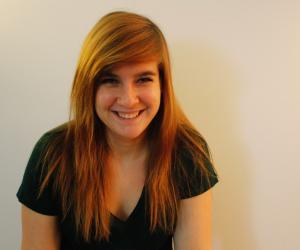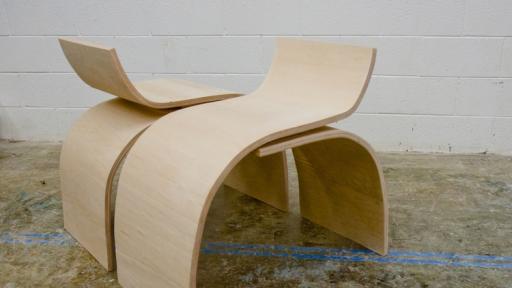Teshia Treuhaft, a recent Rhode Island School of Design (RISD), graduate, considers herself both a designer and a maker. At Design Indaba Conference 2014, she spoke about pushing the boundaries of the traditional “seat-back-four-legs” formula of chair design.
Treuhaft talks about her motivation to create furniture early in her design career: “I wanted to make really pretty things. I wanted to make things that had great form.” So make she did, but she found that she learnt a lot more about her designs once she had gone through the process of making full-scale mock-ups.
“There is something really intoxicating about the ability to bring something from a napkin sketch to a sketch model, to a shop drawing, to something that exists in real life,” she says.
The challenges and opportunities that present themselves in scaling up from sketch to prototype are part of the intoxication for her.
During the prototyping process, Treuhaft found room to strip down the chair’s structure to discover which elements were really necessary for it to be a chair.
Treuhaft launched into an experiment with seating design. She collaborated with a classically trained dancer to experience the work of designing a chair through another discipline so that she could better understand our physical relationship with seating.
I gave her words that we deal with in seating a lot to see how the dancer translated them into physical movement, she says. Words such as ‘comfort’, ‘relief’, ‘stress’… And she would take those and create gesture phrases that dealt with motion and posture.
Form and material is important to Treuhaft’s design process, but in this talk she elaborates more on the interaction of the human body, its movements and seating design. Watching how the dancer used her body in response to her prompts, she created the object around her movement rather than creating the object first.
At RISD Treuhaft co-developed a course called “Rethinking Seating” that challenged students to think about seating design not in terms of “a leg, a back, a seat” but in terms of what a chair can do for the body and what elements a chair really needs to be a chair.









